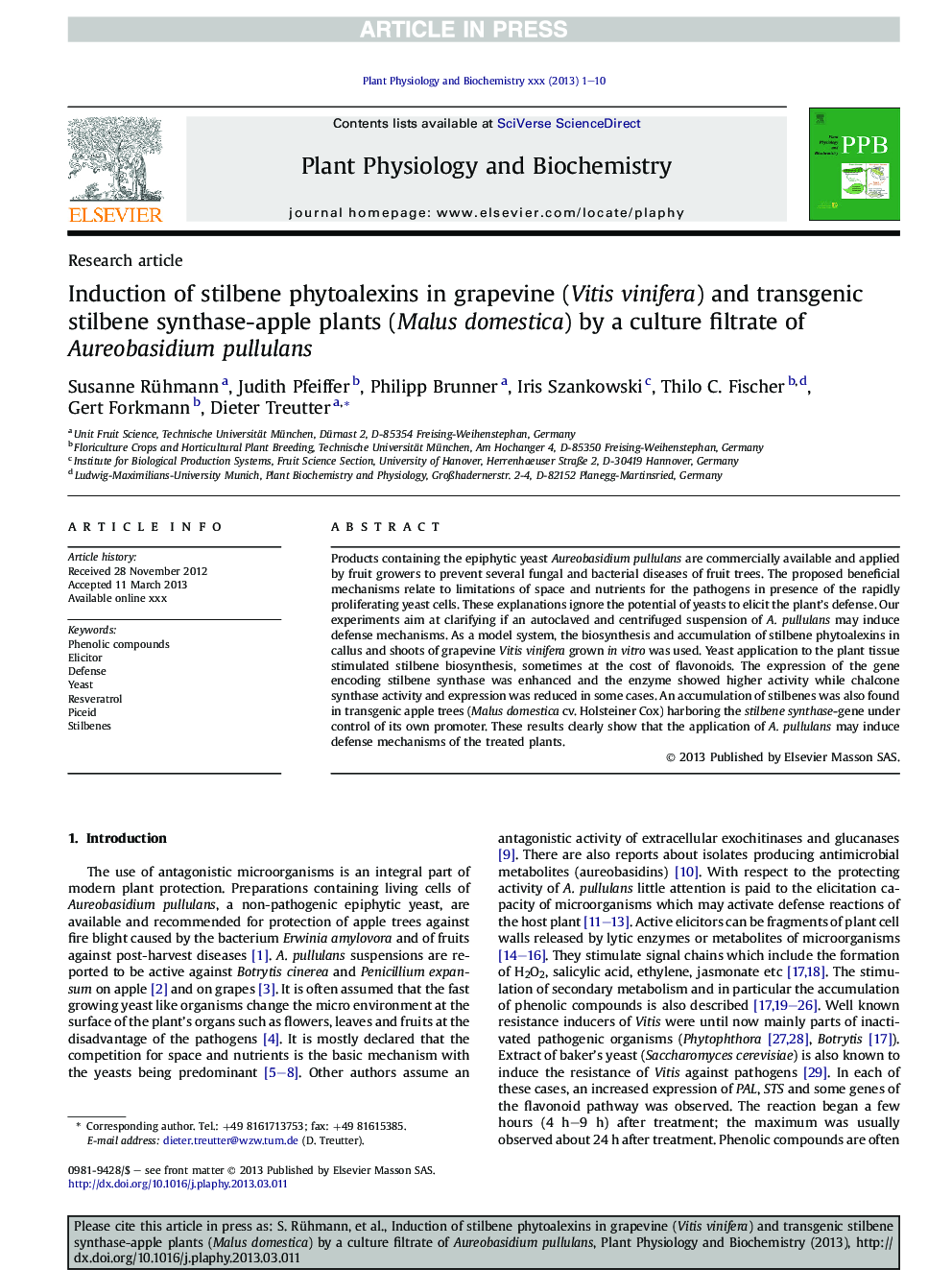| Article ID | Journal | Published Year | Pages | File Type |
|---|---|---|---|---|
| 8355223 | Plant Physiology and Biochemistry | 2013 | 10 Pages |
Abstract
Products containing the epiphytic yeast Aureobasidium pullulans are commercially available and applied by fruit growers to prevent several fungal and bacterial diseases of fruit trees. The proposed beneficial mechanisms relate to limitations of space and nutrients for the pathogens in presence of the rapidly proliferating yeast cells. These explanations ignore the potential of yeasts to elicit the plant's defense. Our experiments aim at clarifying if an autoclaved and centrifuged suspension of A. pullulans may induce defense mechanisms. As a model system, the biosynthesis and accumulation of stilbene phytoalexins in callus and shoots of grapevine Vitis vinifera grown in vitro was used. Yeast application to the plant tissue stimulated stilbene biosynthesis, sometimes at the cost of flavonoids. The expression of the gene encoding stilbene synthase was enhanced and the enzyme showed higher activity while chalcone synthase activity and expression was reduced in some cases. An accumulation of stilbenes was also found in transgenic apple trees (Malus domestica cv. Holsteiner Cox) harboring the stilbene synthase-gene under control of its own promoter. These results clearly show that the application of A. pullulans may induce defense mechanisms of the treated plants.
Related Topics
Life Sciences
Agricultural and Biological Sciences
Plant Science
Authors
Susanne Rühmann, Judith Pfeiffer, Philipp Brunner, Iris Szankowski, Thilo C. Fischer, Gert Forkmann, Dieter Treutter,
